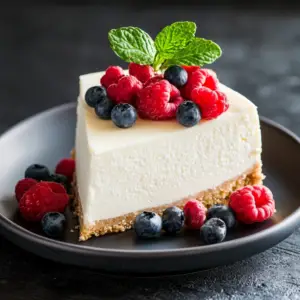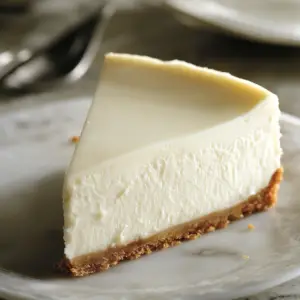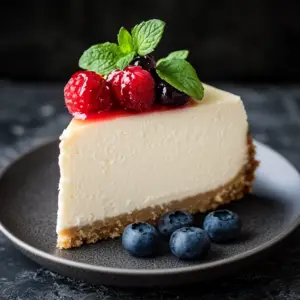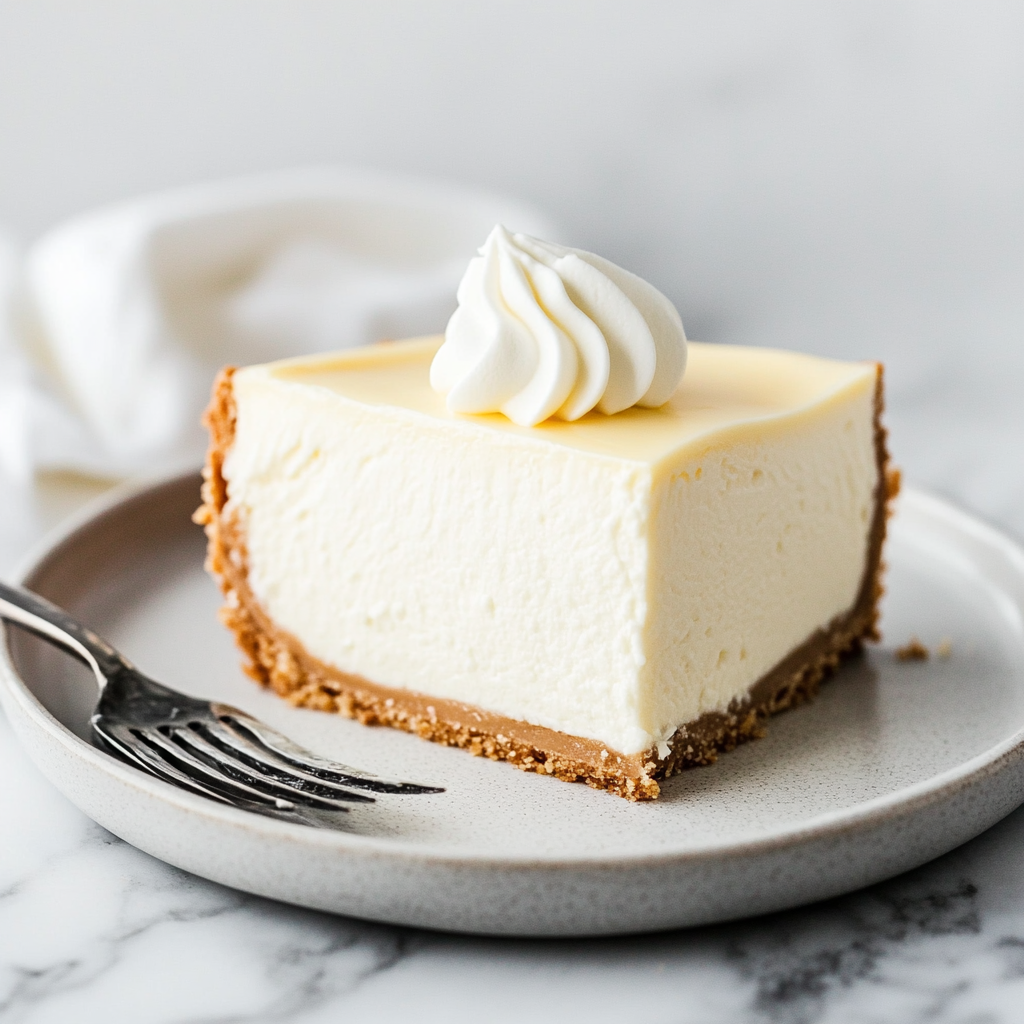Cheesecake is famous for its rich and creamy texture, and that delicious result depends largely on one key ingredient: cream cheese. Whether you’re aiming for a classic baked cheesecake or a lighter, no-bake version, choosing the right cream cheese is essential to achieving the perfect flavor and consistency. But with so many options available—brick, spreadable, whipped, full-fat, and low-fat—it can be confusing to know which one to use.
This article will explain the different types of cream cheese, highlight the best brands for cheesecake, and guide you on how to choose the right one for your recipe. By the end, you’ll know exactly what to look for when buying cream cheese for your cheesecake.
Overview of Cream Cheese Types
Not all cream cheese works equally well for cheesecake. The type you choose can significantly impact the texture and flavor of your dessert. Here’s a breakdown of the main varieties:
- Brick-Style Cream Cheese: The top choice for cheesecake. Brick-style cream cheese is thick and dense, with very little air or moisture, which gives cheesecake its rich, creamy texture and helps it hold its shape.
- Spreadable Cream Cheese: Convenient for spreading on bagels, this type is lighter and contains more air. However, because of the added air and stabilizers, it doesn’t offer the same structure as brick-style cream cheese, often resulting in a softer cheesecake.
- Whipped Cream Cheese: Extra air is whipped into this version, making it light and fluffy. While great for topping toast, it doesn’t have the necessary density for cheesecake, and using it could cause the cheesecake to collapse.
To better understand how cream cheese texture can affect your cheesecake, check out this Serious Eats Cream Cheese Taste Test, which compares different textures and uses.
Best Cream Cheese Brands for Cheesecake
When baking cheesecake, the brand of cream cheese can be just as important as the type. Let’s look at some of the best options based on flavor, texture, and consistency.
1. Philadelphia Cream Cheese
Philadelphia is often regarded as the best option for cheesecake. This brick-style cream cheese is full-fat and perfectly balanced, providing just the right amount of creaminess and tanginess. It’s known for consistently delivering a smooth, rich cheesecake.
2. Organic Valley Cream Cheese
For those who prefer an organic option, Organic Valley Cream Cheese is a great choice. It has a slightly tangier taste with more natural ingredients. Since it’s available in brick form, it’s ideal for cheesecakes where structure and consistency are important.
3. Tillamook Cream Cheese
Tillamook is another trusted brand known for its high-quality dairy products. This cream cheese is slightly sweeter and creamier, which makes it a good choice for sweeter cheesecakes or those with fruity toppings. However, some bakers find it lacks enough salt to balance the sweetness.
For a detailed comparison of how these brands perform in baking, check out the Serious Eats Cream Cheese Taste Test, which reviews several cream cheese brands side by side.
Key Factors to Consider When Choosing Cream Cheese for Cheesecake

Choosing the right cream cheese involves more than just picking a brand. Several key factors—such as fat content, flavor, and texture—will affect how your cheesecake turns out.
1. Fat Content
The fat in cream cheese is what makes cheesecake so creamy and rich. To achieve the best results, always go for full-fat cream cheese. Low-fat or fat-free cream cheese can lead to a crumbly or gritty cheesecake, which doesn’t have the satisfying smoothness of a traditional recipe. Full-fat cream cheese creates a denser and smoother cheesecake.
2. Flavor and Tanginess
The slight tang in cream cheese helps balance the sweetness of the cheesecake. Brands like Philadelphia and Organic Valley offer the perfect amount of tang, while some other brands might taste either too mild or too sour. Tasting a brand you’re unfamiliar with before using it in your cheesecake is a good idea to ensure the flavor works for your recipe.
3. Texture and Spreadability
For cheesecake, you need brick-style cream cheese because it has a dense, smooth texture. Spreadable or whipped cream cheeses are too light, containing extra air and stabilizers that make them unsuitable for cheesecake recipes requiring firmness.
4. Additives and Stabilizers
Many store-bought cream cheeses contain stabilizers like guar gum or xanthan gum to improve texture and shelf life. While these additives are generally harmless, they can sometimes alter the natural texture of your cheesecake. Opting for cream cheese with fewer additives will give you a more authentic, creamy texture.
For more information on how stabilizers impact cream cheese, visit the FDA guide to food additives.
How to Choose the Right Cream Cheese for Different Types of Cheesecake
Not all cheesecake recipes call for the same type of cream cheese. Whether you’re making a baked cheesecake or a no-bake version, here’s how to choose the right cream cheese for the job.
1. Classic Baked Cheesecake
For a traditional baked cheesecake, brick-style full-fat cream cheese is the best option. Its dense texture holds up well during baking, and the full-fat content ensures a smooth, creamy consistency. Always let the cream cheese come to room temperature before mixing to avoid lumps.
2. No-Bake Cheesecake
For a no-bake cheesecake, you have a bit more flexibility. A combination of brick-style and whipped cream cheese can work well to achieve a lighter texture. No-bake cheesecakes rely on chilling to set, so the cream cheese doesn’t need to hold up under heat. However, you’ll still want to use full-fat varieties to maintain richness.
3. Vegan and Dairy-Free Alternatives
If you need a dairy-free option, vegan cream cheese made from nuts or soy is available. These alternatives have improved a lot in recent years, though they still don’t quite match the richness of traditional dairy cream cheese. Vegan cream cheese works best in no-bake cheesecakes, where it doesn’t need to endure the heat of baking. For more tips on using vegan cream cheese, check out this guide from Nigella.
Common Mistakes When Using Cream Cheese for Cheesecake
Even when using the right cream cheese, certain mistakes during the preparation process can impact the final texture and flavor of your cheesecake. Avoiding these common errors will ensure your cheesecake turns out smooth, rich, and delicious.
1. Using Low-Fat or Fat-Free Cream Cheese
One of the biggest mistakes is using low-fat or fat-free cream cheese in cheesecake. The fat content in cream cheese is what gives cheesecake its rich, creamy texture. When you use a lower-fat option, you risk ending up with a cheesecake that’s less flavorful and has a crumbly or gritty texture. For the best results, always choose full-fat cream cheese. The added fat ensures a smooth and dense cheesecake, which is exactly what you want in a traditional recipe.
2. Not Softening the Cream Cheese
Using cold cream cheese can be a major pitfall. If your cream cheese is straight out of the fridge, it will be stiff and difficult to blend properly. This can result in a lumpy cheesecake batter, where small chunks of cream cheese don’t fully mix in with the other ingredients. To avoid this, make sure to soften the cream cheese by leaving it out at room temperature for about 30 minutes before you begin. Softened cream cheese blends smoothly and ensures a lump-free, creamy batter.
3. Overmixing the Batter
Another common mistake is overmixing the cheesecake batter. While it may seem like more mixing will create a smoother batter, overmixing can actually introduce too much air into the mixture. This air can cause the cheesecake to rise too much while baking, and then crack or collapse as it cools. Instead, mix just until the ingredients are combined and the batter is smooth. This helps maintain the dense, rich texture that makes cheesecake so satisfying.
4. Mixing Cream Cheese at the Wrong Temperature
Mixing cream cheese when it’s too cold or even too warm can be problematic. Cream cheese that’s too cold may lead to lumps in your batter, but if it becomes overly warm, it could cause the cheesecake to soften too much during baking, resulting in a loose texture. Aim to mix the cream cheese when it’s at room temperature to ensure the perfect texture. This will allow it to blend evenly with the other ingredients without introducing air or lumps.

5. Skipping the Water Bath (for Baked Cheesecakes)
If you’re making a baked cheesecake, skipping the water bath (also called a bain-marie) is a common mistake that leads to cracked cheesecakes. The water bath helps regulate the baking temperature and adds moisture to the oven, which prevents the cheesecake from drying out or cracking. Simply wrap the outside of your springform pan in foil, place it in a larger roasting pan, and fill the roasting pan with hot water until it reaches halfway up the sides of the springform pan. This method ensures an evenly baked cheesecake with a smooth top.
6. Not Scraping Down the Bowl While Mixing
Failing to scrape down the sides of the bowl while mixing can lead to unevenly mixed ingredients. As cream cheese tends to stick to the sides of the bowl, it’s crucial to stop and scrape the sides regularly to ensure everything is evenly incorporated. This will help avoid pockets of unblended cream cheese that can affect the texture of your cheesecake.
7. Opening the Oven Door Too Soon
When baking cheesecake, it’s tempting to open the oven door to check on your cake. However, doing this too early or too often can cause the oven temperature to drop, which can lead to the cheesecake sinking or developing cracks. Ideally, resist opening the door until the last 10 minutes of baking. If you need to check earlier, use the oven light to peek without disrupting the temperature.
8. Not Letting the Cheesecake Cool Properly
Proper cooling is essential to a perfect cheesecake. Many bakers rush this step, leading to cracks or a cheesecake that doesn’t set properly. After baking, turn off the oven and let the cheesecake sit inside with the door cracked open for about an hour. Then, transfer it to a wire rack to cool completely before refrigerating. This gradual cooling process helps prevent cracking and ensures the cheesecake sets evenly.
FAQs: People Also Ask
Can I use low-fat cream cheese for cheesecake?
You can, but the result will be a cheesecake that’s less creamy and rich. Full-fat cream cheese is recommended for the best texture and flavor.
Is whipped cream cheese good for cheesecakes?
Whipped cream cheese is not ideal for cheesecake, as it contains too much air. It will result in a less dense and less structured cake.
What is the best cream cheese for a no-bake cheesecake?
For no-bake cheesecakes, a mix of brick-style cream cheese and whipped cream cheese can work well. The brick-style offers structure, while the whipped cream cheese adds lightness.
Can I freeze cream cheese for cheesecake?
Cream cheese can be frozen, but its texture may change, becoming grainy when thawed. It’s best to use fresh cream cheese for the smoothest result.
Does the brand of cream cheese matter in cheesecake?
Yes, brand matters. Philadelphia is a popular choice because it has the ideal balance of creaminess and tang, making it perfect for cheesecake.

Conclusion
To bake the perfect cheesecake, selecting the right cream cheese is crucial. For a rich and creamy texture, always choose brick-style full-fat cream cheese, such as Philadelphia. For no-bake cheesecakes, you can experiment with whipped cream cheese for a lighter texture, but always prioritize full-fat options for richness. Avoid low-fat varieties, as they won’t deliver the same results.

